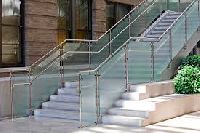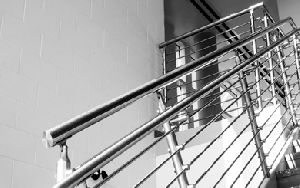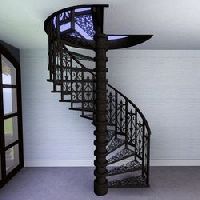
Structural Steel
Structural steel is a category of steel used as a construction material for making structural steel shapes. A structural steel shape is a profile, formed with a specific cross section and following certain standards for chemical composition and mechanical properties. Structural steel shapes, sizes, composition, strengths, storage practices, etc., are regulated by standards in most industrialized countries. Generally consisting of portland cement, water, construction aggregate (coarse and fine), and steel reinforcing bars (rebar), concrete is cheaper in comparison to structural steel. Having high strength, stiffness, toughness, and ductile properties, structural steel is one of the most commonly used materials in commercial and industrial building construction. Structural steel can be developed into nearly any shape, which are either bolted or welded together in construction. Structural steel can be erected as soon as the materials are delivered on site, whereas concrete must be cured at least 1–2 weeks after pouring before construction can continue, making steel a schedule-friendly construction material
...more
stainless steel stairs
stainless steel stairs Structural steel can be developed into nearly any shape, which are either bolted or welded together in construction. Structural steel can be erected as soon as the materials are delivered on site, whereas concrete must be cured at least 1–2 weeks after pouring before construction can continue, making steel a schedule-friendly construction material.
...more
stainless steel roofing sheet
stainless steel roofing sheet stainless steels are not as corrosion-resistant as the other two classes but are extremely strong and tough, as well as highly machinable, and can be hardened by heat treatment. Martensitic stainless steel contains chromium (12–14%), molybdenum (0.2–1%), nickel (less than 2%), and carbon (about 0.1–1%) (giving it more hardness but making the material a bit more brittle). It is quenched and magnetic.
...more
Stainless Steel
Stainless steel does not readily corrode, rust or stain with water as ordinary steel does. However, it is not fully stain-proof in low-oxygen, high-salinity, or poor air-circulation environments.[2] There are various grades and surface finishes of stainless steel to suit the environment the alloy must endure. Stainless steel is used where both the properties of steel and corrosion resistance are required. Stainless Steels have a mixed microstructure of austenite and ferrite, the aim usually being to produce a 50/50 mix, although in commercial alloys the ratio may be 40/60. Duplex stainless steels have roughly twice the strength compared to austenitic stainless steels and also improved resistance to localized corrosion, particularly pitting, crevice corrosion and stress corrosion cracking. stainless steels are not as corrosion-resistant as the other two classes but are extremely strong and tough, as well as highly machinable, and can be hardened by heat treatment. Martensitic stainless steel contains chromium (12–14%), molybdenum (0.2–1%), nickel (less than 2%), and carbon (about 0.1–1%) (giving it more hardness but making the material a bit more brittle). It is quenched and magneti
...more
GI STRUCTURE
Galvanization or galvanisation (or galvanizing as it is most commonly called in that industry) is the process of applying a protective zinc coating to steel or iron, to prevent rusting. The most common method is hot-dip galvanizing, in which parts are submerged in a bath of molten zinc. Galvanizing protects in three ways: It forms a coating of zinc which, when intact, prevents corrosive substances from reaching the underlying steel or iron. The zinc serves as a sacrificial anode so that even if the coating is scratched, the exposed steel will still be protected by the remaining zinc. The zinc protects its base metal by corroding before iron. For better results, application of chromates over zinc is also seen as an industrial trend. The size of crystallites in galvanized coatings is a visible and aesthetic feature, known as "spangle". By varying the number of particles added for heterogeneous nucleation and the rate of cooling in a hot-dip process, the spangle can be adjusted from an apparently uniform surface (crystallites too small to see with the naked eye) to grains several centimetres wide. Visible crystallites are rare in other engineering materials.
...more
cast iron stairs
cast iron stairs Cast iron is still manufactured by much the same process as it was produced historically. Iron ore is heated in a blast furnace with coke and limestone. This process "deoxidizes" the ore and drives off impurities, producing molten iron. The molten iron is poured into molds of the desired shape and allowed to cool and crystallize.
...more
cast iron
Cast iron is one of the oldest ferrous metals used in construction and outdoor ornament. It is primarily composed of iron (Fe), carbon (C) and silicon (Si), but may also contain traces of sulphur (S), manganese (Mn) and phosphorus (P). It has a relatively high carbon content of 2% to 5%. It is hard, brittle, nonmalleable (i.e. it cannot be bent, stretched or hammered into shape) and more fusible than steel. Its structure is crystalline and it fractures under excessive tensile loading with little prior distortion. Cast iron is, however, very good in compression. The composition of cast iron and the method of manufacture are critical in determining its characteristics. In grey cast iron, the carbon content is in the form of flakes distributed throughout the metal. In white cast iron, the carbon content is combined chemically as carbide of iron. White cast iron has superior tensile strength and malleability. It is also known as 'malleable' or 'spheroidal graphite' iron. Cast iron is still manufactured by much the same process as it was produced historically. Iron ore is heated in a blast furnace with coke and limestone. This process "deoxidizes" the ore and drives off impurities, producing molten iron. The molten iron is poured into molds of the desired shape and allowed to cool and crystallize.
...moreBe first to Rate
Rate ThisOpening Hours